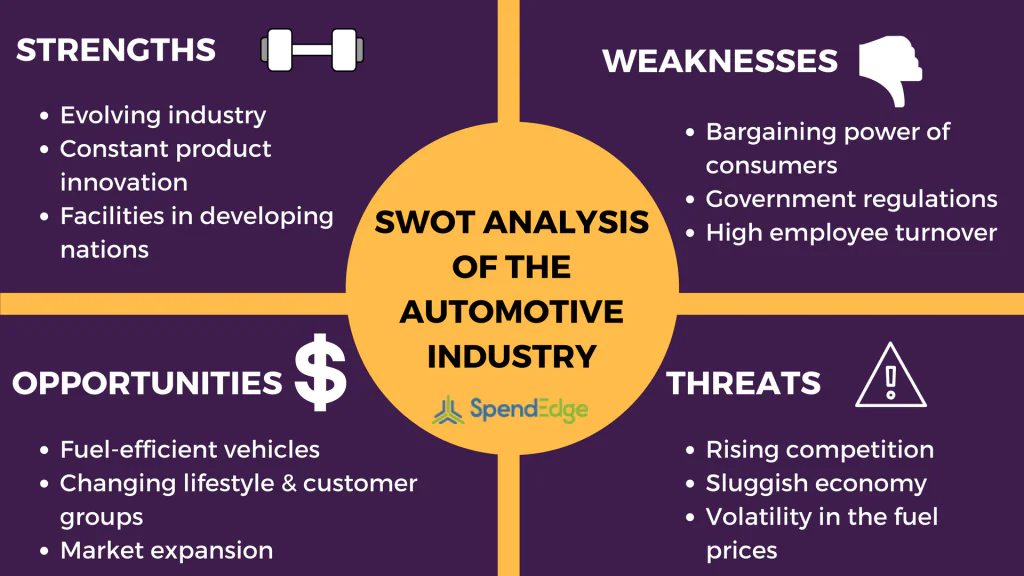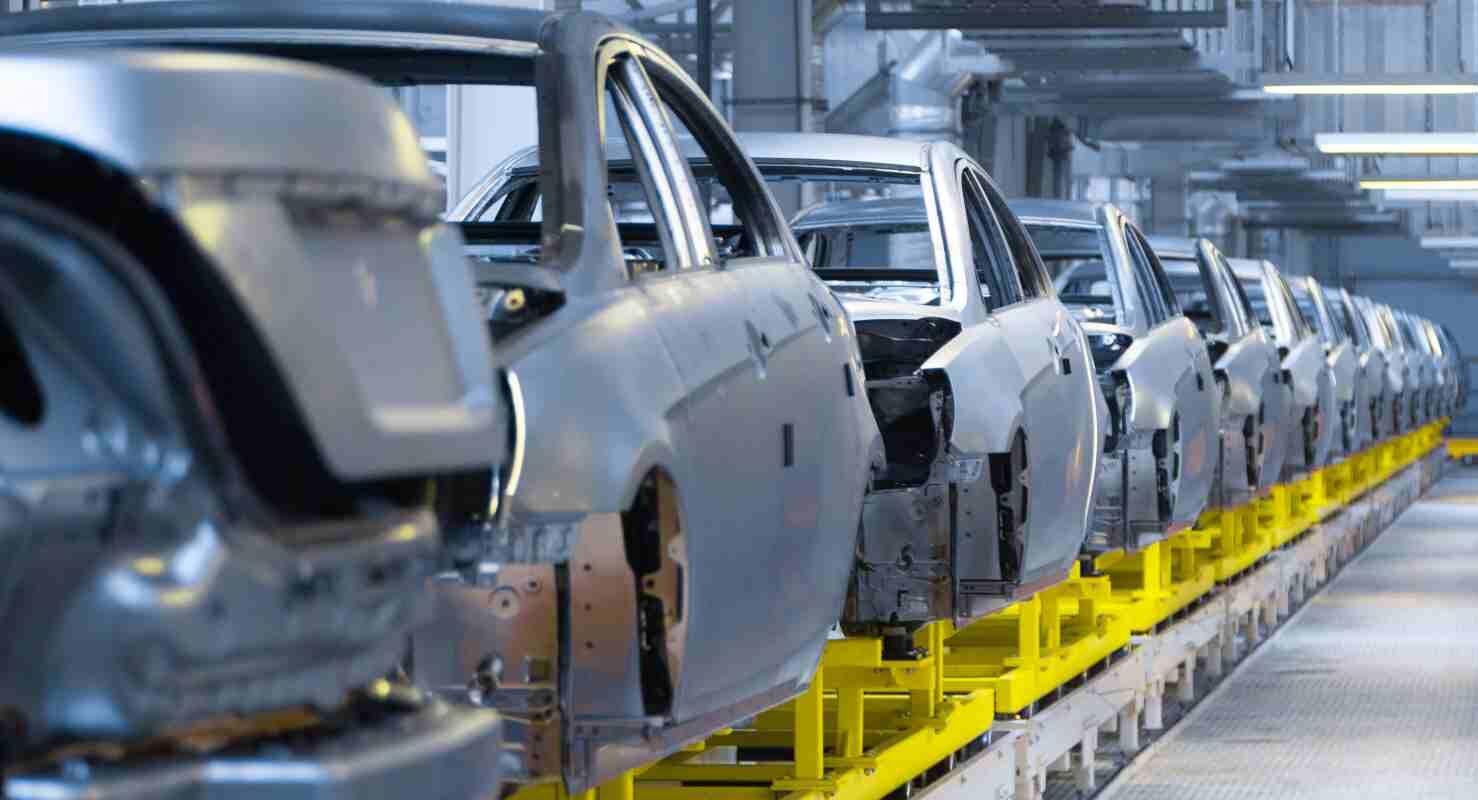The automobile SWOT analysis is a powerful strategic tool used to understand the core strengths, weaknesses, opportunities, and threats of the automotive sector. Companies rely on this framework to identify areas of improvement and opportunities for growth, especially in today’s competitive and innovation-driven environment.
By conducting an automobile SWOT analysis, firms can uncover key opportunities they are best positioned to exploit. Similarly, understanding internal weaknesses helps them address external threats more effectively. In this rapidly transforming landscape, comparing performance using automotive industry SWOT analysis allows organizations to benchmark against competitors and refine their strategies for long-term success. Given the societal impact on operations and business ecosystems, SWOT analysis is essential for identifying opportunities and threats that influence organizational success. It has become a staple strategic method in navigating complex environments, particularly within the ever-evolving automotive landscape.

SWOT Analysis Automotive Sector for Companies to Enhance the Economy
Strength
Evolving Industry: The automotive industry remains one of the most dynamic and growth-oriented sectors. Vehicles have revolutionized personal mobility, enabling people to work, live, and travel more conveniently than ever before.
Innovation and Technology: Innovations in electric vehicles and alternative fuels such as Shell gas and CNG are prompting increased R&D investment. These developments are at the core of current and future growth.
Cost Optimization Through Manufacturing: Many automobile companies are establishing manufacturing units in cost-effective regions like India and China. These locations offer access to resources, lower labor costs, and proximity to large consumer markets.
Unlock strategic growth and outpace industry disruptions with a tailored automobile SWOT analysis designed to identify key opportunities and mitigate emerging threats.
Weakness
Bargaining power of consumers: Over the last 3-4 decades the automobile market has shifted from a demand to a supply market. Availability of a considerable number of variants, stiff competition between them, and a long list of alternatives to choose from has given power to customers to decide whatever they like.
Government regulations: Regulations like excise duty, no entry of outside vehicles in the state, decreasing number of the validity of registration period, and volatility in the fuel prices pose considerable challenges to automobile companies. These factors also affect the growth of the industry.
High employee turnover: The employee turnover in the automobile industry is found to be higher when compared to several other sectors. Furthermore, attracting and retaining employees in the automotive industry can be very challenging, especially in the case where competitors are doing what they can to lure the best talent.
Opportunities
Fuel-efficient vehicles: Optimization of fuel-driven combustion engines and cost efficiency programs are excellent opportunities for the automobile market. Emerging markets will be the primary growth drivers for a long time to come, and hence fuel-efficient cars are the need of the hour.
Changing lifestyle & customer groups: The increased availability of data and information, shift in consumer demand, and expanded regulatory requirements for safety and fuel economy will fuel the growth of this industry.
Market expansion: Entering new markets like Asian & BRIC nations will skyrocket the demand for vehicles. Furthermore, other markets are also likely to emerge soon.
Threats
Rising competition: Presence of a large number of players in the automobile industry results in intense competition and companies eating into other’s share, leaving little scope for new players.
Sluggish economy: Macroeconomic uncertainty, recession, unemployment, etc. are the economic factors which will daunt the automobile industry for an extended period.
Volatility in fuel prices: For the consumer segment, fluctuations in fuel prices remains the determining factor for growth. Also, government regulations pertaining to the use of alternative fuels like CNG and Shell gas is also affecting the inventories.
Addressing Emerging Threats in the Automotive Sector
Environmental Regulations
Many countries are addressing environmental issues, with the automotive industry being pinpointed as a major contributor to global climate problems. This has led to a focus on implementing environmental regulations that push for the production of emission-reducing cars. These regulations could lead to a halt in car production and force car dealerships to clear their inventory of fuel-powered vehicles. While the strict implementation of regulations may take some time, it will likely require car dealerships to adapt to the industry’s shift towards more environmentally friendly technology.
Shared Mobility
Technology has made life faster and, in some ways, more affordable for people around the world. Now, instead of going to restaurants, you can order delivery from your favorite restaurant using a food delivery app. You don’t have to wait on the curb to hail a cab either; you can use a car-sharing or ride-hailing app to get from place to place. While this may seem convenient for those who don’t own cars, it poses a threat to the automotive industry.
The rise of shared mobility means that car sales could decrease. With more people choosing to share rides, fewer people will be inclined to buy vehicles, potentially impacting car dealerships in urban areas. This might lead dealers to work harder to persuade people to buy cars. However, it’s unlikely that a 2:1 ratio of ride-sharing to car ownership will occur. People value the freedom of driving their own cars whenever and wherever they want. Additionally, ride-sharing services can wear down a car more quickly than personal use, impacting the vehicle’s performance and mileage.
Electric Vehicles
The threat to the automotive industry from electric vehicles is not new. Electric cars offer several advantages, such as producing fewer emissions and being more cost-effective. However, transitioning from fuel-powered vehicles to electric ones is a challenging and costly endeavor for car dealerships. Electric cars are still a tough sell due to their high cost and the need for infrastructure development, such as more charging stations. Manufacturers have yet to perfect the ideal electric vehicle, and it will take time for drivers to fully embrace the idea of electric cars. As an alternative, car dealerships can consider offering hybrid cars.
Smart, Connected Vehicles
The influence of modern technology on driving is significant. Smart and connected vehicles make driving feel like using a smartphone, with connectivity enabling data collection and communication with the surroundings. Personalized vehicle settings and shared mobility services are also possible. However, challenges remain, such as public understanding, small sizes, and privacy concerns. Despite these hurdles, as technology continues to advance, smart vehicles present more opportunities than threats in the automotive industry.
Self-Driving Cars
As per the records now, there are still no fully self-driving cars, but many experts believe they will revolutionize transportation by reducing accidents and pollution. When self-driving cars become dominant, private vehicle ownership might decrease as people opt for ride-hailing services due to the high cost of self-driving cars and potential government restrictions on fuel-powered engines. Car dealerships may face challenges selling self-driving cars due to their high cost and unfamiliar technology. However, shared mobility services may become more popular in urban areas, while personal vehicle ownership may still be necessary in rural areas.
Conclusion
The automotive industry is experiencing a transformative era, shaped by innovations in electric mobility, smart vehicle technology, and environmental policy. With advancements in connectivity and autonomous systems, manufacturers face both exciting opportunities and complex challenges.
Utilizing a thorough automobile SWOT analysis is vital for companies to understand their current position and devise actionable strategies. Whether navigating supply chain disruptions, addressing cybersecurity risks, or adapting to shared mobility trends, a well-executed automotive industry SWOT analysis enables smarter decisions and long-term growth.
As the sector continues to evolve, leveraging strategic insights through SWOT frameworks will be key to thriving in an increasingly competitive and tech-driven landscape.





